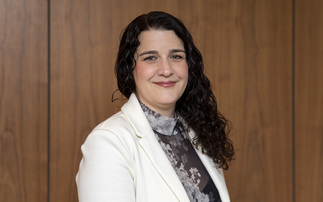Pricing, products and processes are the protection industry's priorities. Louise Colley begs to differ and gives a call to arms to the emotional side of marketing.
It was two shillings per week. When I first started out in the insurance industry, my gran would go on and on telling me about the money on the mantelpiece for Ken!
Ken was the United Friendly man who came to collect the insurance premiums set aside for the week. Week in, week out.
He was an integral part of the community and ensured people had ‘some' life insurance and savings in place.
Face-to-face contact on the doorstep. He had plenty of rapport and knew more about what was going on than most who was pregnant or getting married. The next sales opportunity which was always seized.
This weekly activity meant being protected was tangible. It was part of day-to-day life in those days. But this was years ago.
"So what?" it would be reasonable to say and what has this got to do with today, with increasing challenges, such as acquiring new customers and the impact of increased regulation?
It doesn't take a genius to work out why ‘The man from the Pru' and others disappeared and nobody is suggesting it will return.
However, it does give us plenty of food for thought. Thinking about how we get protection back into the consumer conscious as it was back then.
In Ken's day, this was characterised by living in a neighbourhood, for example, within close proximity of each other and therefore with easy accessibility to an adviser.
The power of the community
Nowadays, ‘community' can often be used to describe an online group of people, rather than those connected through a physical location.
Communities do exist, but their identity has changed and so to access them our tactics will also have to change.
If life insurance cannot be part of the ‘local' community today, we can replace that ‘community' with the advent of the ‘online' community.
Growing at a phenomenal rate, as an industry we must leverage new medium to get across the importance of family protection.
What this does not mean is creating a virtual Ken and there is no suggestion that the online world will replace the need for face-to-face advice.
Instead, we must harness the power of these online communities to share the message as to why family protection is so important.
The result will hopefully create greater customer awareness and interest. In an ideal world, this will then create customer ‘pull' into seeking an adviser to meet their needs.
Imagine the power of sharing film clips of real-life case studies, which really strike home the reason why family protection is important.
The potential audience is vast. In the UK, 23 million of us have a Facebook account and 50% of the users are logging in every day.
New evidence also suggests that consumers' time spent using online communities is rapidly increasing.
Many communication methods are used in social software, either separately or in combination, including text-based chat rooms and forums that use voice and video text.
Social networks and review sites are providing spaces for self-expression and collective opinion formation.
These are basic human needs that used to be served in traditional communities.








